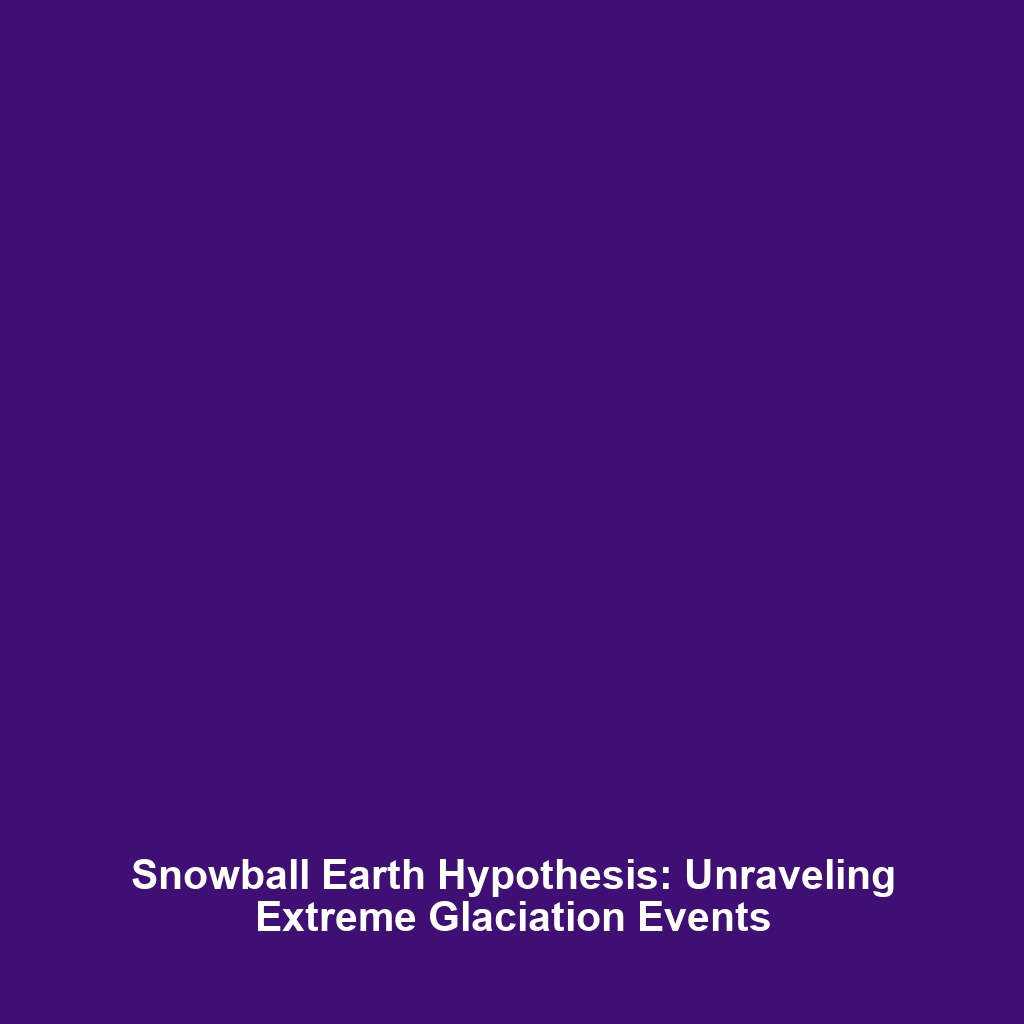Snowball Earth Hypothesis: Extreme Glaciation in Climate History
The Snowball Earth Hypothesis suggests that during the late Precambrian era, Earth experienced extreme glaciation, where ice blanketed significant portions of the planet. This theory is pivotal in understanding our planet’s climate history, highlighting the dynamics of Earth’s climate system, and how it can transform dramatically over geological time scales. Exploring the evidence and implications of Snowball Earth provides insights into climate change and the resilience of life on Earth in response to unprecedented climatic conditions.
Key Concepts
The Snowball Earth Hypothesis is grounded in multiple key concepts that explain periods of global cooling and glaciation:
- Glacial Periods: The hypothesis posits that the Earth underwent extensive glaciation events, where ice sheets expanded to the equator during several intervals.
- Albedo Effect: An increase in albedo—reflectivity of the Earth’s surface—caused by ice cover, which led to reduced solar absorption and further cooling.
- Tectonic Activity: Changes in continental positioning and formation of mountain ranges affected ocean and atmospheric circulation, contributing to climatic extremes.
- Biological Feedback: The survival of life forms during these glacial events and their adaptations offer understanding of biological resilience.
Applications and Real-World Uses
Understanding the Snowball Earth Hypothesis has several significant practical applications within the realm of climate history:
- Climate Modeling: Insights from this hypothesis influence models predicting future climate scenarios based on past extremes.
- Fossil Record Analysis: The study of geological and sedimentary records from Snowball Earth periods helps scientists to interpret biological evolution and extinction patterns.
- Resource Exploration: Understanding ancient climates aids in locating natural resources by identifying potential areas of sedimentary deposits formed during glaciation.
Current Challenges
Researching and applying the Snowball Earth Hypothesis faces several challenges:
- Data Scarcity: Limited geological records and samples from certain periods make it difficult to construct comprehensive models.
- Theoretical Disputes: Ongoing debates exist regarding the extent and timing of the glaciation events, with some experts questioning the validity of a complete Snowball scenario.
- Technological Constraints: Current technology sometimes restricts the ability to gather precise data from deep geological formations.
Future Research and Innovations
Future research surrounding the Snowball Earth Hypothesis may lead to innovative breakthroughs in climate science:
- Advanced Climate Models: Development of more sophisticated climate models that integrate ancient climatic data can improve our understanding of climate change.
- Genomic Studies: Investigations into the genomics of ancient organisms can unveil clues about survival strategies during extreme climatic events.
- Technological Advancements: Next-generation satellite technology may provide unprecedented data on current climate systems, paralleling insights from Snowball Earth conditions.
Conclusion
The Snowball Earth Hypothesis remains a crucial element in climate history research, providing valuable perspectives on Earth’s climatic transitions and life resilience. This theory challenges scientists to explore past climatic extremes, equipping them with knowledge that influences modern climatology. To delve deeper into the subject, explore further readings on ancient climates, glaciation impacts, and climate change effects.
This structured document provides a comprehensive overview of the Snowball Earth Hypothesis, ensuring key information is communicated clearly while being optimized for search engine visibility.

Leave a Reply